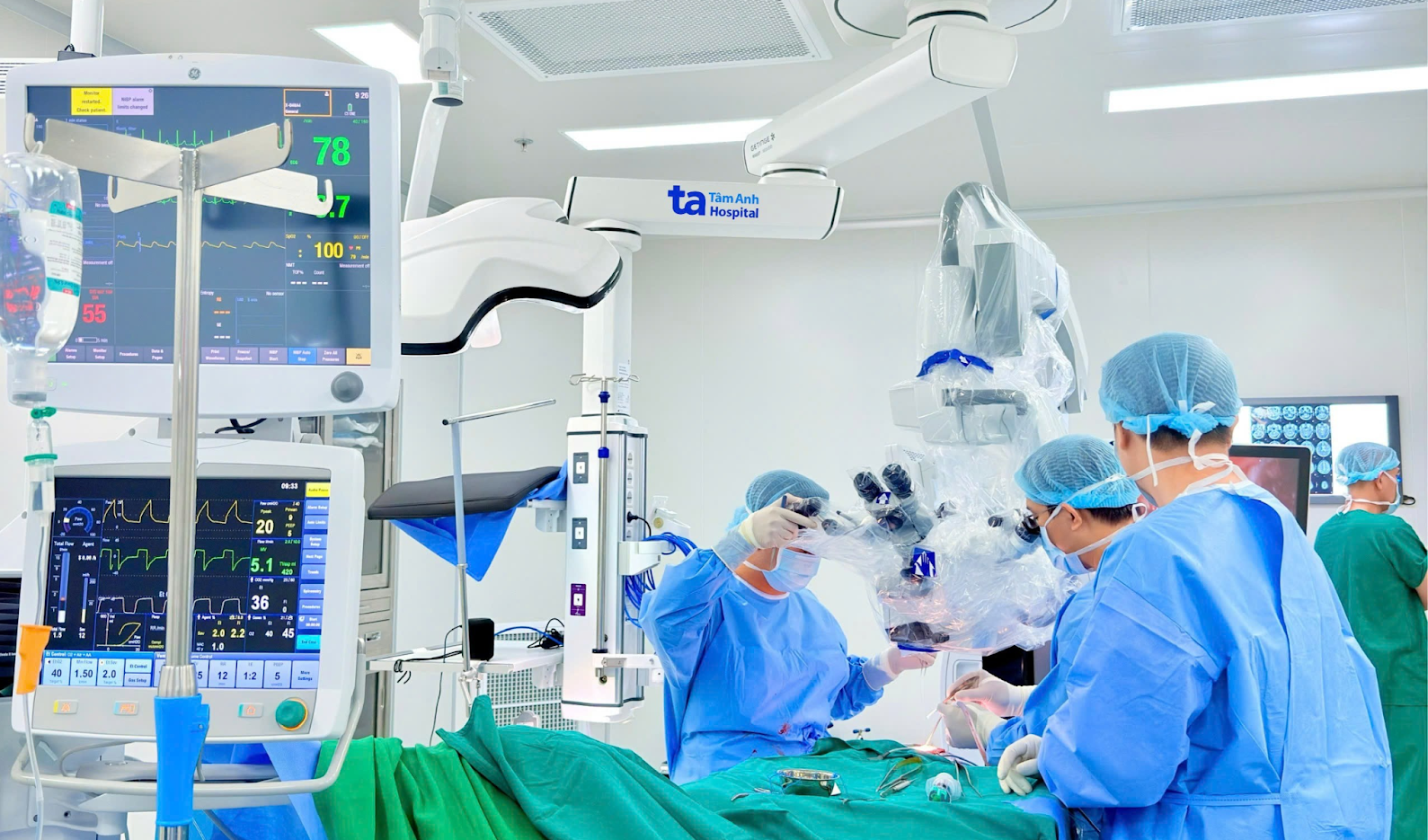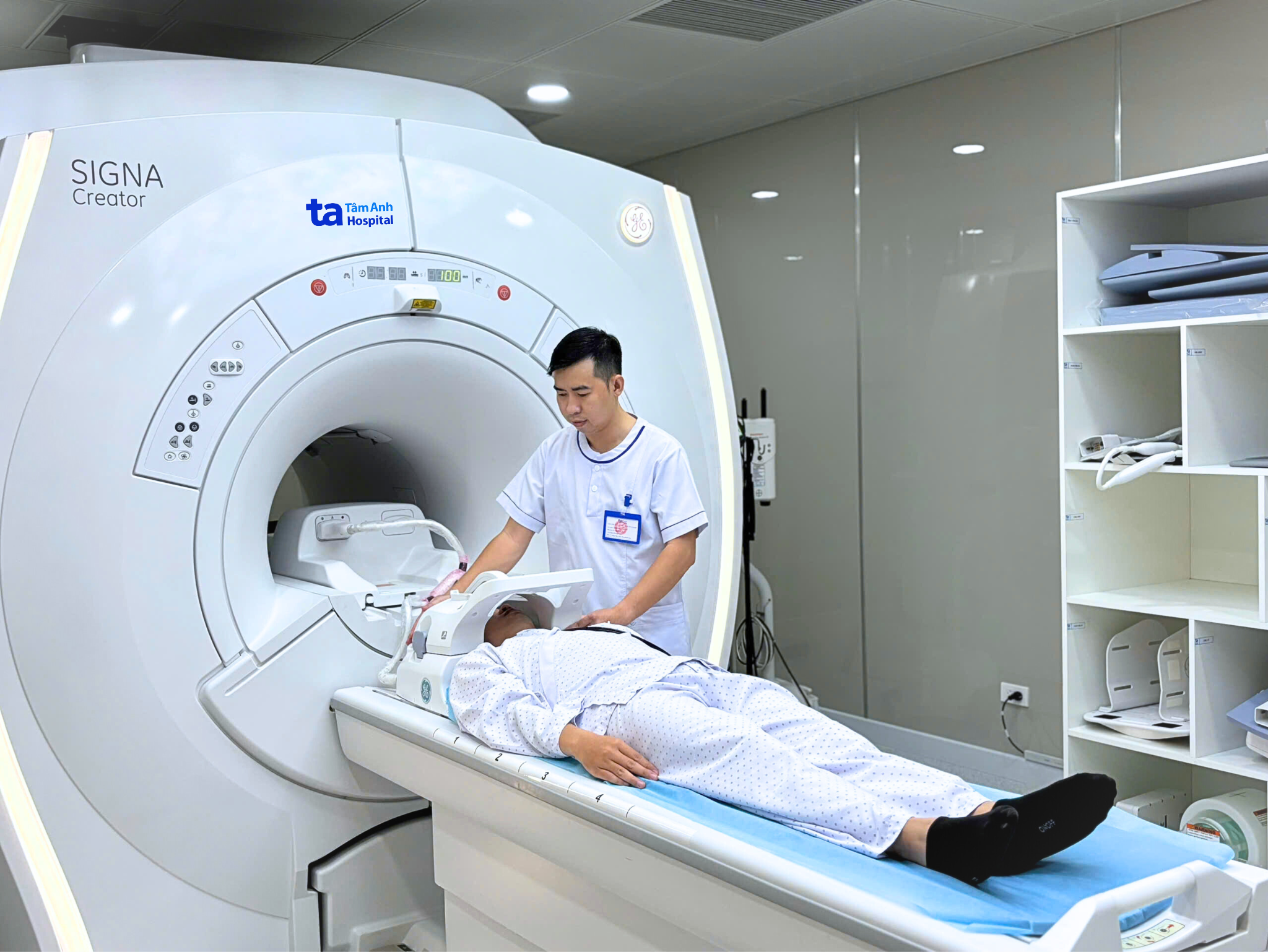Dr. Nguyen Tan Sang, from the Department of Neurology at Tam Anh General Hospital in Ho Chi Minh City, explains that moyamoya disease is a condition where the major arteries at the base of the brain, particularly the internal carotid arteries, gradually narrow or become blocked. When blood flow to the brain is obstructed, the body forms tiny collateral blood vessels around the blockage to compensate for the reduced blood supply. On cerebral angiograms, these small, twisted vessels create a faint network that looks like "a puff of smoke," hence the name moyamoya (Japanese for "puff of smoke"). These substitute capillaries are insufficient to nourish the brain and are very fragile, leading to a high risk of ischemic stroke or cerebral hemorrhage.
Recently, Tam Anh General Hospital has treated several stroke cases related to moyamoya disease. One patient, 58-year-old Linh, suffered from the hemorrhagic form of moyamoya, the most dangerous type. She experienced sudden weakness and paralysis. A 3 Tesla MRI scan revealed stenosis of the distal internal carotid artery along with rupture of the collateral circulation in the basal ganglia on both sides of the brain. Another patient, Minh, suffered a cerebral infarction due to bilateral moyamoya disease combined with internal carotid artery dysplasia.
Both patients underwent extracranial-intracranial (EC-IC) bypass surgery to restore cerebral circulation, assisted by AI-integrated microscopes. After the bypass was established, blood from outside the skull was directed deep into the brain, supplementing the insufficient blood flow and reducing the risk of recurrent cerebral infarction or hemorrhage.
Moyamoya disease often has a subtle onset, with transient and easily misdiagnosed symptoms. Patients may experience headaches and dizziness for extended periods, but at a mild level, leading them to neglect seeking medical attention. Severe cases can cause intense headaches, loss of balance, hemiparesis, speech impairment, seizures, or behavioral changes. Transient ischemic attacks (TIAs) caused by moyamoya disease, if recurring, are a warning sign of stroke, which can result in permanent paralysis, cognitive decline, or even death if not promptly treated.
 |
A doctor performs EC-IC bypass surgery on a moyamoya patient. Photo: Hospital provided |
A doctor performs EC-IC bypass surgery on a moyamoya patient. Photo: Hospital provided
Moyamoya is a cerebrovascular disorder more prevalent in East Asian countries like South Korea and Japan, with studies indicating a prevalence of about 3 in 100,000 people. About 10-15% of patients have a family history of the disease, which typically appears in children aged 5-10 and adults over 40. In younger individuals, the disease often manifests as TIAs or cerebral infarction, while adults may experience cerebral hemorrhage or a combination of both.
Dr. Sang notes that routine cranial CT scans are often insufficient to detect moyamoya disease, as they only show images of the brain parenchyma and secondary lesions like infarction or hemorrhage, without assessing the stenosis, arterial blockage, or the formation of the abnormal vascular network characteristic of the disease. For accurate diagnosis, doctors usually recommend advanced imaging techniques like magnetic resonance angiography (MRA) and digital subtraction angiography (DSA). In some cases with suspected seizures, an electroencephalogram (EEG) may also be performed to differentiate from other neurological conditions with similar symptoms.
 |
Medical staff prepare a patient for an MRI scan to assess moyamoya disease. Photo: Tam Anh General Hospital |
Medical staff prepare a patient for an MRI scan to assess moyamoya disease. Photo: Tam Anh General Hospital
Depending on the progression and clinical manifestations, doctors will determine the appropriate treatment. Mild cases can be monitored and treated medically; severe cases require EC-IC bypass surgery to restore cerebral circulation.
Dr. Sang advises individuals experiencing unusual symptoms such as persistent headaches, limb weakness or numbness, transient slurred speech, or unexplained dizziness to seek prompt consultation with a neurologist. Early detection allows for timely intervention, improving treatment effectiveness, reducing the risk of stroke, and minimizing severe complications.
Lan Anh
*Patient names have been changed
| Readers can submit questions about neurological diseases here for doctors to answer. |












